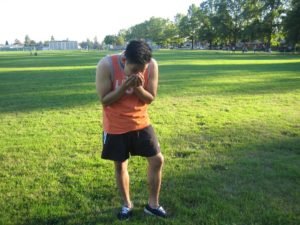Many individuals who end up with breathing issues which rise and fall typically worsen during the months of April to May might develop seasonal allergies upon exposure to hickory pollen. The hickory trees which include shellbark and shagbark varieties as well as sub-species pecan are capable of producing substantial amounts of pollen that are transported by the wind that reaches far-flung areas. Due to the airborne-quality of the tree pollen, many individuals can suffer from allergy symptoms even when there are no hickory trees nearby. Proper diagnosis of hickory pollen allergy will help the individual prepare and properly manage seasonal sensitivities.
When do symptoms occur?
Individuals who are suspected with hickory pollen allergy should know when and what degree their symptoms manifest. The highest pollen count occurs in the morning from 5AM to 10AM. The pollen count also increases on warm, windy and dry days and drop right after a heavy rain.
Those who have sensitivity to hickory pollen should check the tree pollen levels on the weather report during springtime whether online or on TV to check if their breathing issues coincide with the elevated local counts when hickory is flowering. This information can help the doctor correctly identify the potential allergens.

Breathing issues
The inhalation of hickory pollen can affect the sinuses, nasal passages and the throat, thus resulting to inflammation and fluid accumulation. An alternate between stuffy and runny nose occurs along with breathing issues due to congestion. Frequent sneezing is also common among highly sensitive individuals and if not treated, can disrupt the sleeping pattern of the individual that will surely affect his/her overall performance at work or school.
Those who have the allergy also have asthma which can be triggered by exposure to the hickory pollen. Elevated levels of hickory pollen can increase the risk for asthma attacks among those who already have the condition.
Inflammatory issues
Hickory pollen allergy can cause itching and swelling as the body reacts by sending out histamine and other chemicals to the bloodstream. The symptoms usually start with itchiness in the ears, face, nose, mouth or throat.
The inflammation involving the eye conjunctiva or thin transparent membrane covering the white part of the eye can cause red-colored, weeping eyes and inflamed eyelids with or without itchiness. This condition is called as allergic conjunctivitis and can be triggered by tree allergies.
Pain
If the individual was exposed to hickory pollen, it can set off uncomfortable allergy symptoms for a prolonged period, depending on the tree cycles and weather patterns. The individual might develop pain or tenderness due to the continuous inflammation of the sinuses and mucous membranes. The face and eye areas can become sore to the touch along with the development of a sore throat. In some cases, headaches can also occur in some individuals who are prone to this type of allergy.
